
The passenger pigeon or wild pigeon is an extinct species of pigeon that was endemic to North America. Its common name is derived from the French word passager, meaning "passing by", due to the migratory habits of the species. The scientific name also refers to its migratory characteristics. The morphologically similar mourning dove was long thought to be its closest relative, and the two were at times confused, but genetic analysis has shown that the genus Patagioenas is more closely related to it than the Zenaida doves.

Columbidae is a bird family consisting of doves and pigeons. It is the only family in the order Columbiformes. These are stout-bodied birds with short necks and short slender bills that in some species feature fleshy ceres. They primarily feed on plants, and can be taxonomically divided amongst granivores, that feed mostly on the ground on seeds, and frugivores, that feed mostly on fruits, from branches. The family occurs worldwide, often in close proximity with humans, but the greatest variety is in the Indomalayan and Australasian realms.

George Grossmith was an English comedian, writer, composer, actor, and singer. His performing career spanned more than four decades. As a writer and composer, he created 18 comic operas, nearly 100 musical sketches, some 600 songs and piano pieces, three books and both serious and comic pieces for newspapers and magazines.

Sir Edward German was an English musician and composer of Welsh descent, best remembered for his extensive output of incidental music for the stage and as a successor to Arthur Sullivan in the field of English comic opera. Some of his light operas, especially Merrie England, are still performed.

Sophie Tucker was an American singer, comedian, actress, and radio personality. Known for her powerful delivery of comical and risqué songs, she was one of the most popular entertainers in the U.S. during the first half of the 20th century. She was known by the nickname "the Last of the Red-Hot Mamas".
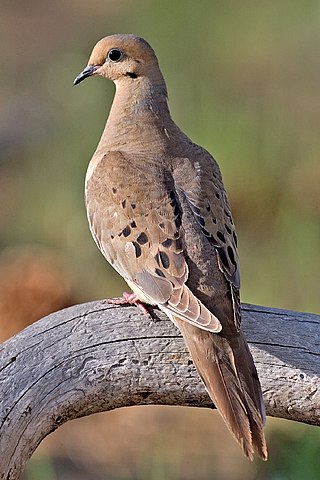
The mourning dove is a member of the dove family, Columbidae. The bird is also known as the American mourning dove, the rain dove, the chueybird, colloquially as the turtle dove, and it was once known as the Carolina pigeon and Carolina turtledove. It is one of the most abundant and widespread North American birds and a popular gamebird, with more than 20 million birds shot annually in the U.S., both for sport and meat. Its ability to sustain its population under such pressure is due to its prolific breeding; in warm areas, one pair may raise up to six broods of two young each in a single year. The wings make an unusual whistling sound upon take-off and landing, a form of sonation. The bird is a strong flier, capable of speeds up to 88 km/h (55 mph).
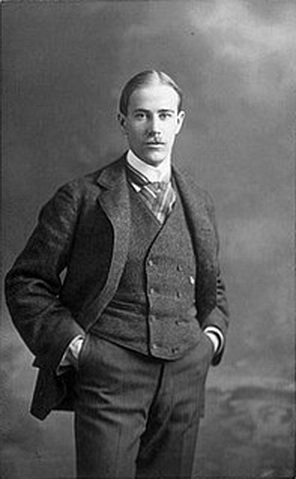
Louis Agassiz Fuertes was an American ornithologist, illustrator and artist who set the rigorous and current-day standards for ornithological art and naturalist depiction and is considered one of the most prolific American bird artists, second only to his guiding professional predecessor John James Audubon.

George Bird Grinnell was an American anthropologist, historian, naturalist, and writer. Originally specializing in zoology, he became a prominent early conservationist and student of Native American life. Grinnell has been recognized for his influence on public opinion and work on legislation to preserve the American bison. Mount Grinnell in Glacier National Park in Montana is named after him.
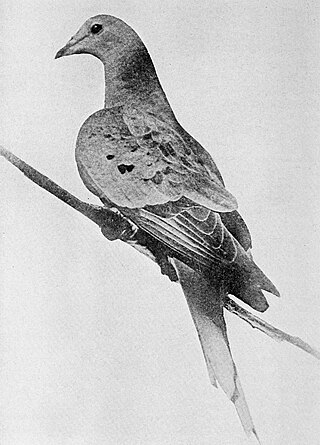
Martha was a passenger pigeon, the last known of her species; she was named "Martha" in honor of Martha Washington, the first lady of the United States from 1789 to 1797.

The superb lyrebird is an Australian passerine songbird, one of two species from the family Menuridae, with the other being the much rarer Albert's lyrebird. It is one of the world's largest songbirds, and is renowned for its elaborate tail and courtship displays, and its excellent mimicry. The species is endemic to Australia and is found in forest in the southeast of the country. According to David Attenborough, the superb lyrebird displays one of the most sophisticated voice skills within the animal kingdom—"the most elaborate, the most complex, and the most beautiful".

Show Biz Bugs is a 1957 Warner Bros. Looney Tunes animated short directed by Friz Freleng and featuring Mel Blanc. The short was released on November 2, 1957, and stars Bugs Bunny and Daffy Duck.
Kouji, which can be translated literally as "mouth skill" or "skill of mouth" is a Chinese vocal mimicry performance art which utilizes the human speech organs to mimic the sounds of everyday life. When this vocal mimicry is combined with varying degrees of story telling, acting, and singing, it results in the basic structure for a Kouji performance. The sounds most commonly used in Kouji tend to be those of animals, such as birds or dogs, but with the advancement of technology, Kouji has also come to incorporate imitations of busses, planes, and modern weapons. It is also now common to use a microphone in the performance of Kouji. Often the Kouji of a highly skilled performer so accurately mimics real life sounds that if the audience were to close their eyes, they might not be able to tell that the sounds were being produced by a human. Although it is an art form in and of itself, it may often be performed in combination with other traditional Chinese art forms such as Cross-talk.

Charles Kellogg was an American vaudeville performer who imitated bird songs, and later a campaigner for the protection of the redwood forests of California. He was born on a ranch in Susanville, California and grew up in the 1870s observing the animals and birds of the forests and learning outdoor skills. He constructed a mobile home, called the "Travel Log", out of a redwood tree and drove it around the country to raise awareness of the plight of the California forests. Its maximum speed was 18 mph. The Travel Log itself is currently on display in the Visitor Center at Humboldt Redwoods State Park.

Bird extinction is the complete elimination of all species members under the taxonomic class, Aves. Out of all known bird species,, 159 (1.4%) have become extinct, with 226 (2%) being critically endangered. There is a general consensus among ornithologists that if anthropogenic activities continue as current trends suggest, one-third of all bird species, and an even greater proportion of bird populations, will be rendered extinct by the end of the 21st century.
"Listen to the Mocking Bird" (1855) is an American popular song of the mid-19th century. Its lyrics were composed by Septimus Winner under the pseudonym "Alice Hawthorne", and its music was by Richard Milburn.
Arlie William Schorger was a chemical researcher and businessman who also did work in ornithology. His chemistry work of note largely involved wood and waterproofing. His only chemistry book was The chemistry of cellulose and wood, but he had 34 patents.

Errol Fuller is an English writer and artist who lives in Tunbridge Wells, Kent. He was born in Blackpool, Lancashire, grew up in South London, and was educated at Addey and Stanhope School. He is the author of a series of books on extinction and extinct creatures.
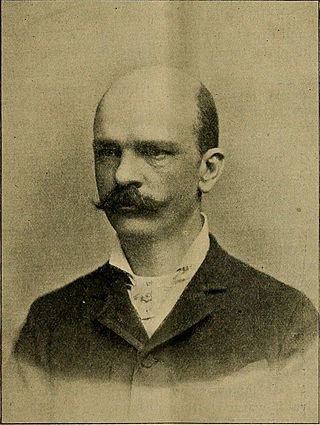
Robert Wilson ShufeldtJr. was an American osteologist, myologist, museologist and ethnographer who contributed to comparative studies of bird anatomy and forensic science. He held strong views on race and was a proponent of white supremacy. A scandal and subsequent divorce from his second wife, the granddaughter of the famous ornithologist John James Audubon, led to a landmark judgment by the Supreme Court of the United States of America on the subject of alimony and bankruptcy.
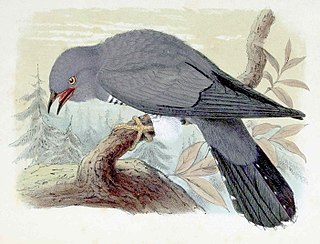
Birdsong has played a role in Western classical music since at least the 14th century, when composers such as Jean Vaillant quoted birdsong in some of their compositions. Among the birds whose song is most often used in music are the nightingale and the cuckoo.
A pigeon whistle is a device attached to a pigeon such that it emits a noise while flying. They have long been used in Asian countries, particularly China for entertainment, tracking and to deter attack by birds of prey. The practice was once common but is now much less widespread owing to increasing urbanisation and regulation of pigeon keeping. A modern version of the device, based on specimens held at the Pitt Rivers Museum in Oxford, has been developed by musician Nathaniel Mann. Mann has performed with the devices attached to racing pigeons at festivals across the United Kingdom.

















